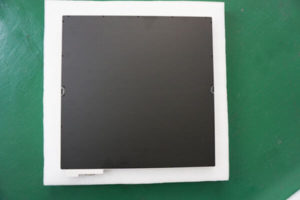At present, the commonly used scintillator coating materials for X-ray flat panel detectors are cesium iodide and gadolinium oxysulfide. The material and process of the scintillator coating affect the ability of X-rays to be converted into visible light, and therefore affect DQE. The cesium iodide X-ray flat panel detector has a stronger ability to convert X-rays into visible light than gadolinium oxysulfide, but the cost is relatively high. High; processing cesium iodide into a columnar structure can further improve the ability to capture X-rays and reduce scattered light. X-ray flat panel detectors with gadolinium oxysulfide coating have fast imaging speed, stable performance and low cost, but the conversion efficiency is not as good as that of cesium iodide coating.
In an amorphous selenium flat panel detector, the conversion of X-rays to electrical signals depends entirely on the electron-hole pairs generated by the amorphous selenium layer, and the level of DQE depends on the ability of the amorphous selenium layer to generate charges. Generally speaking, The DQE limit of the indirect conversion X-ray flat panel detector with CsI TFT structure is higher than the DQE limit of the a-Se direct conversion X-ray flat panel detector.

Author:Lillian
Tel:+86 18953679166
Email:service@newheek.com
Company:Weifang Newheek Electronic Tech Co., Ltd.